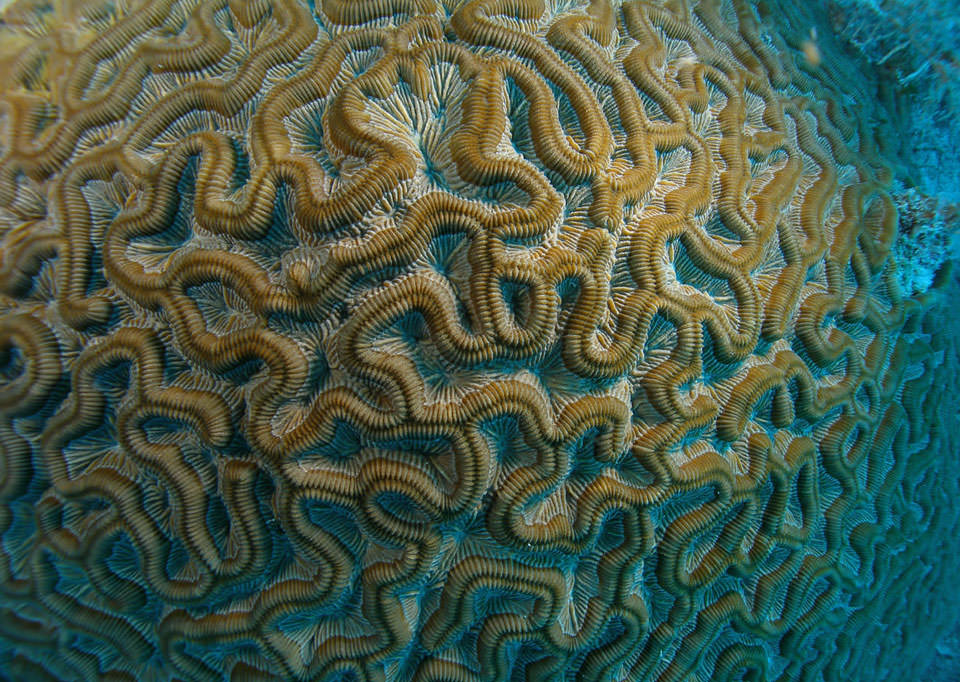What are brain corals?
Brain corals, a slow-growing species of coral, often act as foundations for reefs.

Brain coral in the Dry Tortugas, Florida.
The cerebral-looking organisms known as brain corals do not have brains, but they can grow six feet tall and live for up to 900 years! Found in the Caribbean, Atlantic, and Pacific Oceans, brain corals display what is known as Meandroid tissue integration. This means that the polyps, which are the basic living unit of corals, are highly associated to one another. Their tissues are more closely connected than those of other corals and are not separated by skeletal structures. Many researchers think that the more integrated a coral's polyp tissue is, the more advanced the coral species.
Tissue integration is advantageous because the coral polyps are able to transfer molecules such as nutrients, hormones, and oxygen—making it easier for the brain coral colony to communicate. In some cases, however, this can lead to vulnerability, because if even one polyp gets sick, the pathogen can quickly spread to the rest of the colony. Some species of brain corals suffer mass mortalities due to diseases such as black band disease, white plague, and thermal bleaching.
Get Social
More Information
Did you know?
The ecological importance of brain corals is enormous. Brain corals grow very slowly, but they build super strong structures that act as the foundations of coral reefs. They are known as massive growth type corals. Massive corals take a long time to get big, but once they do, they offer outstanding protection to marine life and coastlines. Coral reefs can absorb up to 97 percent of the wave energy during storm events, and brain corals play an important role in that function.

Last updated: 06/16/24
Author: NOAA
How to cite this article